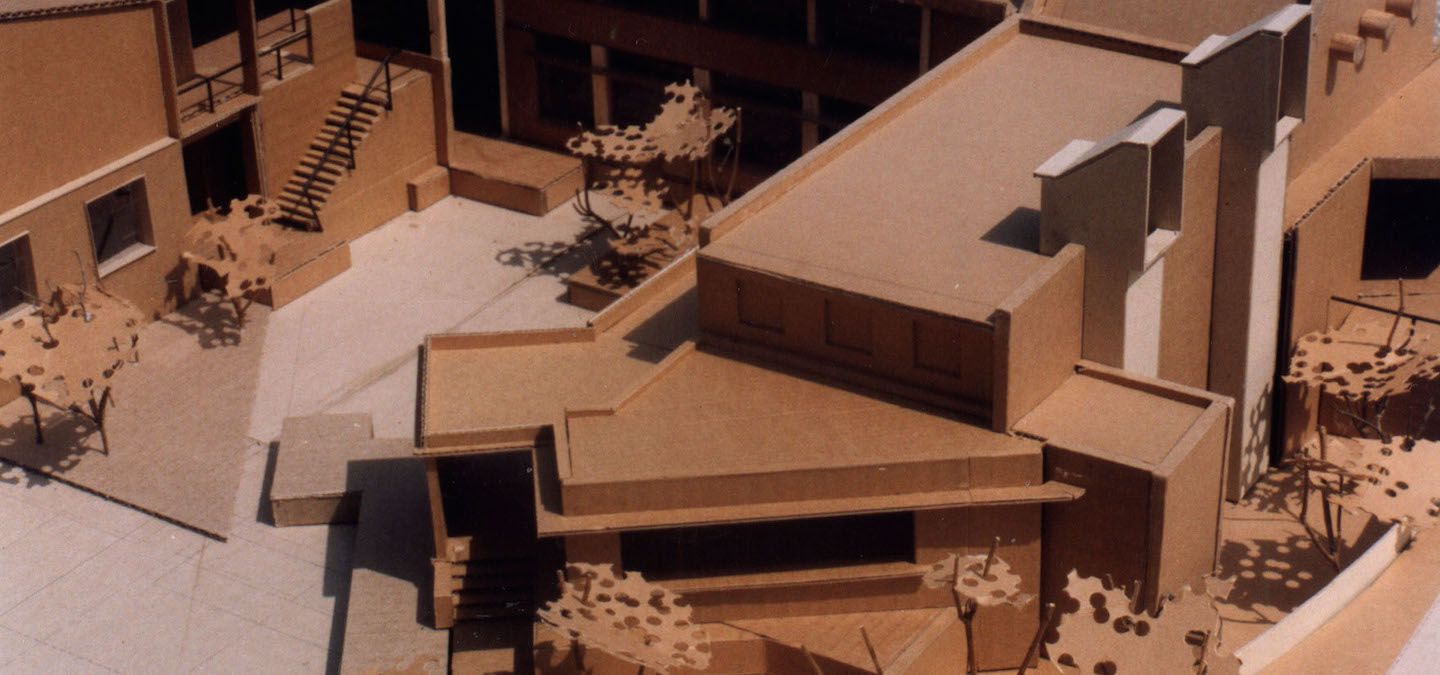
Shrujan is a non-governmental organization working in the field of women’s self employment programs through the revival and development of traditional embroidery crafts since 1969, based in Kutch region of Gujarat State in Western India.
The Shrujan campus is situated in Bhujodi, 10 kms from the city of Bhuj in Kutch. In contrast to the arid desert vegetation around, one encounters a well tended orchard with varied fruit trees reminiscent of the ‘wadis’ or the orchards in the south-western region of Kutch.
The program incorporates an expressive public face with its main retail store, visitor’s lounge, an exhibition gallery, as well as internal workshop areas, textile design cell, offices, textile conservation cell, auditorium space and residential quarters. The client brief demanded a sustainable architectural response taking into account seismic stability and the harsh desert climate. The flagship store for its products was to be incorporated in an attempt to create a new face for Shrujan and provide a marketing platform for its wholesale international clientele.
“A need to reassert the unique cultural milieu and the resilient spirit of the Kutchhi people in the wake of a devastating natural calamity provided the underlying sub-text for the project.”
The architecture responds to the broad physical context of the region. It attempts to evoke the desert archetype through a vocabulary of massive, continuous shielding ochre coloured walls, controlled openings, the deeply shaded courtyard, and the wind towers. The two overriding features of the plan are the inward looking courtyard and the enclosing walls with the wind towers on the south and the west.
The protective walled enclosures on the heat gain side, contrast with this open courtyard that coalesces views and movement in its shaded precincts.
Workshop areas which require even daylight open towards the court with large continuous bay windows towards the north. Circulation is both through and around the court. The courtyard also offers a dynamic release of space at the corner on a diagonal axis to the main entrance. The entrance is signified by tiered plinths and a short flight of steps to access the retail store. A ramped corridor links the entrance to the visitor lounge, the workshops and the café, on the ground level. Space is modulated in its proportions as one moves through the building, providing vignettes of the courtyard and the sky. The resultant architectural form is a layering of contrasting elements.
Light in all its modulations was a constant concern, brought in through recessed openings and bounced off of gently curving or sloping roof profiles.
The sense of contrast is carried into the choice of materials and textures within the building. Rough pebblecrete of the copings and the plinth contrast with the ochre painted walls. All exterior areas are paved in exposed brick, and rough kotah stone continuing into the courtyard. The courtyard is designed as a multifunctional space, capable of informal congregations as well as quiet moments of repose for an individual.
Harnessing the prevailing breezes and shielding the work areas from the harsh light and heat were essential to the organization of the plan. The principal idea of wind catchers oriented towards the south and west directions create a passive cooling mechanism that works for all the major spaces. Small exhausts mounted in the circular barrel openings on opposite walls induce the required air changes for comfort.
The wind scoops were designed to also act as structural anchors for the building, capable of taking lateral forces and counter seismic movement. The architectural program required the spaces to flow continuously around the central north facing courtyard.
The structural resolution came about by way of expansion joints starting above the grade slab level, separating the building into four zones.
The building is designed as a combination of moment resisting frames and shear walls in RCC and brick masonry and was detailed as per code provisions outlined in IS 13920-1993 for ductility and seismic resistance.
A three chambered rain water harvesting tank was built in the main courtyard capable of storing unto 100,000 litres of rain water, channelled through a carefully worked out system. This tank is connected to another tank which stores water from the bore well. Recharge wells located in the parking area and in the lower courtyard prevent runoff.
Shrujan is an attempt to weave together holistic concerns of the site, context and the program to define an architecture that heralds a contemporary idiom even as it is inextricably rooted in its local sensibilities.
Emerging to an altered reality, from the destruction in Kutch, it seeks to reinstate and reassert the vigour of an institution on which basic sustenance of village artisans rests.